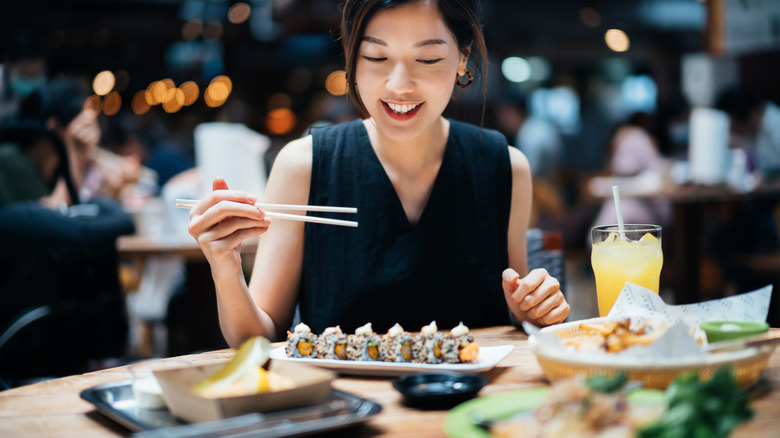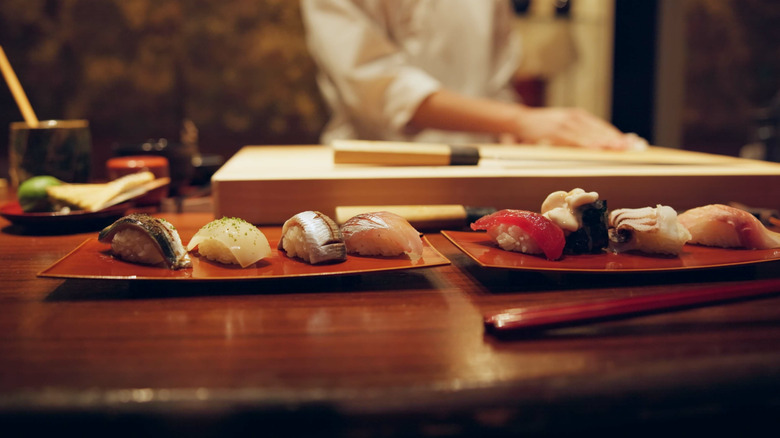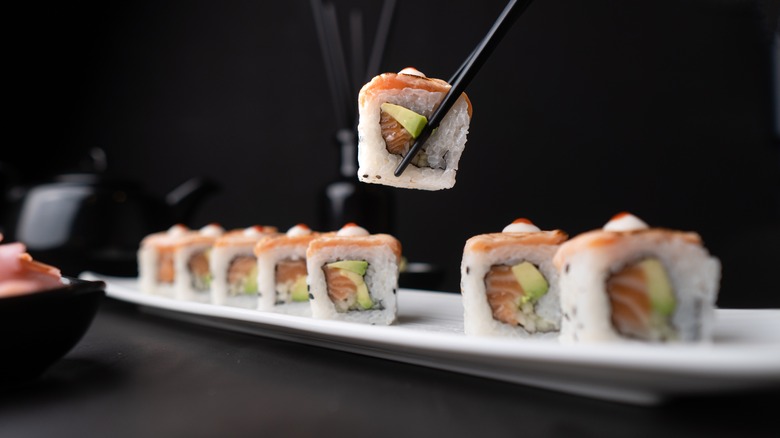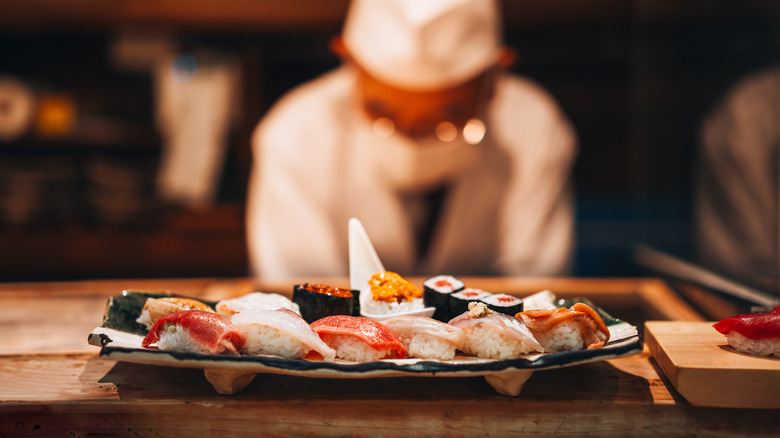For Westerners, sushi represents a lot of different things. Sushi could mean a night out at a Japanese restaurant. Maybe it’s a lunch date with a colleague, complemented with a pot of green tea. Sushi is a work of art, something to admire. Or: Sushi is a birthday celebration, arriving on a balsa wood boat. Sushi can also be a snack: You could buy a plastic container at the supermarket and gobble down a quick California roll in the car. Sushi is an excuse to use chopsticks — or wait, should you use your fingers? Sushi incorporates raw fish, except when it’s all-vegetable, or buffalo chicken, or cheeseburgers, which of course isn’t traditionally Japanese, but are there rules? Sushi is something you can definitely make at home, but actually don’t, because it might make you sick, unless you buy sashimi-grade seafood, which some fishmongers dissuade you from doing. Now that we’re thinking about it, sushi seems kind of complicated, doesn’t it?
Indeed, many non-Japanese love this delicacy and eat it regularly, but they don’t necessarily know much about it, never mind its significance to Japanese cuisine. This is why Tokyo entrepreneur Tetsuya Hanada came up with the concept for Sushi University, which introduces curious foodies to local chefs who specialize in sushi. Not only do travelers get to sample delicious creations — they also get to ask all their questions, thanks to an on-hand interpreter. We corresponded with Hanada about how his passion project works — and how it’s helped epicureans bridge the cultural divide. You could easily include it on a list of the best things to do in Tokyo for first-time visitors.
“When eating out at a restaurant, it is rare to have an interpreter,” wrote Hanada. “At high-class restaurants, the waiters will give you a simple explanation. However, they are not supposed to take questions. But there are many things you want to ask.”
The international origins of Sushi University
How Sushi University works
To date, Sushi University has 10 different interpreters who join travelers on their visits to restaurants and facilitate questions and answers between the “student” and Japanese-speaking chef. Any demographic is welcome on this two-hour experience, including children. Guests are picked up at their hotel and taken to a single restaurant, where sushi is prepared directly in front of them, but the tour is otherwise open-ended. “There is no script for the Sushi University sessions,” says Tetsuya Hanada. “The sushi chef will watch the reactions of the customers and try to find out what they want to hear.”
Right off the bat, Hanada notes that there are many misconceptions about sushi in general, and Edomae sushi in particular. Sashimi, or slices of raw fish, is not considered sushi at all. This contrasts with nigiri sushi, those familiar pieces of fish artfully laid over bundles of vinegar-soaked rice: these fillets aren’t just “raw meat” but prepared in a very particular way, including marination, aging, and various forms of cooking. “At conveyor belt sushi restaurants,” says Hanada, “sashimi is placed on vinegared rice by a robot so it cannot be called nigiri sushi in the strict sense of the word.” While fish in the U.S. is routinely frozen, Japanese food handlers consider fish “fresh” when it’s either alive or refrigerated for a reasonable amount of time; true Edomae sushi would never spend time in a freezer.
Taking Sushi University’s lessons home
These distinctions are important, especially for Westerners with only the vaguest concept of Japanese customs, like not eating while you’re walking around, a food habit that will instantly out you as a tourist, or the American restaurant habit that may confuse your waiter in Japan. Proper Edomae sushi comes with some surprises for rookies. No matter how you slice it, though, it’s still delicious.
Visitors won’t become experts overnight, of course. Sushi has existed in Japan since the nineth century, and a two-hour session is only the tip of the educational iceberg. Still, Tetsuya Hanada hopes that Sushi University will be a transformative experience. To underscore important concepts, the website has a “visual dictionary” as well as a guide to restaurant etiquette. The company also published an ebook, “Beyond the Sushi Chef: The Ultimate Bible for Mastering Nigiri Sushi,” which helps Sushi University alumni experiment with recipes at home. “By removing language barriers, travelers’ concerns will disappear and information will become more interesting when it was written in their mother language,” says Hanada. He adds: “We are reminded that there is still a lot of work to be done.”





